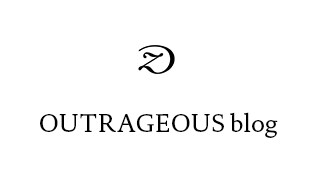 |
| Karl Hans Janke, Das große Ziel Erde Nr.2, 1950-1970, 29,7 x 42 cm, Pen and Pencil on Paper |
KARL HANS JANKE
Das große Ziel Erde Nr.2
February 8th - Marth 6th, 2020
Opening: February 7th, 6-9pm
New Findings! New discoveries! Enduring development! – Modernism saw the future. At the beginning of the 20th century, it required little effort to sense the optimism of a new era. Scientific insights were abundant and astounding, and within a few decades, many inventions would change everyday life completely. Yet unlike in other self-confident eras, the burgeoning period of modernism lacked something. There was renaissance man such as Leonardo da Vinci or Goethe, who each summarized their epoch. Furthermore, it seemed as if the division of labor in modern production had also divided art and science. In a rapid development, art too was no less striving for the new, and it detached itself from the task of depiction and thus from its once self-evident role as a commenter and chronicler.
Karl Hans Janke, born in 1909, was a child of his time. Growing up in an increasingly visually based media world, he found his visual stimuli and challenges not in Goya or Picasso, but, like so many young people in the approaching decades, in the illustrations accompanying popular scientific literature, in rough sketches and exploded views of the latest technical inventions and in the pictorial worlds of artists who, though disdained by the custodians of high art,depicted speculative visions of a future that science fiction literature put into words. However, science fiction had not yet committed itself to sociological allegories and dystopias, but found its motto in the title of Alfred Bester’s novel The Stars My Destination. Bester's novel was very well informed about the horrors of those wars, which Karl Hans Janke experienced first as a child and later briefly as a soldier. There is no record of what led Janke to devote himself entirely to invention, but it became the life work of the man who, after his mother’s death in 1949, spent most of the remainder of his life in psychiatric institutions despite his own self-assessment that he was perfectly mentally sound.
Karl Hans Janke drew his inventions and created elaborate models, of which the latter almost certainly no longer exist. What made his drawings remarkable from a scientific perspective is their accuracy and attention to detail, thanks to which, even his most preposterously absurd inventions hold a definite persuasive power. Despite its uncertain technical feasibility, Janke was granted a patent for a GPS-like positioning system, and his visions of space gliders for tourists use also point to one of his special abilities: he knew how to detect or anticipate needs. In addition to his great visions, he designed, as did the late chancellor Konrad Adenauer, a great number of both practical and nonsensical things for everyday living some of which if their production had been pursued, would have had a good chance of being commercially successful. But he did not see his true destiny in small things. Karl Hans Janke wanted to show mankind the way to a better future.
What made him do it? One of his works shows not an invention, but two fighting dinosaurs. The striking motif is clearly reminiscent of Charles Knight’s drawing Leaping Laelaps from 1897. This first depiction of dinosaurs as agile creatures still inspired imaginary worlds in the 1970s, what must it have been like for a young person seeing such a depiction at the beginning of the 20th century! Janke’s drawings and inventions process the significant advances in geological understanding that science gained in his youth: he understood our planet to be not a solid, fixed entity, but a sphere comprised of gradually moving and changing land masses. One can regard him as an enthusiast whose understanding of the knowledge of his time drifts into the fantastic and serves as a point of departure for his own theories.
Karl Hans Janke did not become an inventor of world-saving proportions, but functioning as a researcher between popular science publications and a fantastical world of ideas. He interpreted the knowledge of his time and realized his experiments in his dreams. Well-known researchers of his time also crossed this border. Nikola Tesla, who developed the alternating current for the transmission of energy over long distances, talked about a "free energy" that could be drawn inexhaustibly from space – a notion pursued by Janke in his remarks on the "German Atom".
Between all these directly and in detail impressive works, it is not really possible to assign Karl Hans Janke a fixed role as either an inventor, a fantasist, a designer, a driven, fascinated child, or a fantastic artist; no attribution seems to suffice and never do the individual parts stand in the same relationship to each other. An enigmatic person, not a polymath, but an artist who had absorbed the complexity of modernism and was able to depict it. All of this unaffected by the admonishing voice, so present today, warning it is "five to twelve," yet in the spirit of modernism full of hope that humanity will ultimately be able to find good solutions. Naive? – When we look at his image of the second Earth today, it is immediately noticable that the recently arrived spacemen seem to have had nothing better to do than to return to a stone age way of life; Janke unmasks our own longings for modernity in a perceptive way. Good art can do that.
Oliver Tepel


